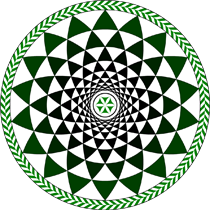Speaker
Prof.
Christian Naether
(Institute of Inorganic Chemistry University of Kiel)
Description
`Investigations on the development of strategies for a more rational synthesis of new materials with desired physical properties is still a major field in modern chemistry. This approach, called “crystal engineering”, includes systematic investigations on the structure property relationships of compounds as well as ideas how a given structure can specifically be prepared. In this context, coordination compounds are of special importance, because based on simple considerations concerning the nature of the metal cations and the coordination properties of the ligands, their coordination networks can be predefined to some extent. This is of extraordinary importance, because if one have control over the structure one have also no control over the properties of the compounds. Following these ideas, an increasing number of new coordination compounds with interesting physical properties were recently reported.`
`However, for any further application or for any characterization of the properties of a material, large and pure amounts are required, which even for coordination compounds is sometimes difficult to achieve. In most cases their synthesis is performed in solution where different species will be in equilibria and therefore, crystallization can lead to mixtures of different compounds, which also will include polymorphic modifications or isomers. Moreover, several of such compounds or modifications will be thermodynamically metastable and thus, can be easily overlooked if the synthesis conditions are not investigated in detail. Finally, because the energy differences between different modifications are usually very small, structure prediction is frequently more difficult than expected and any conclusion on the stability of a compound only on the basis of structural parameters should not be drawn.`
`This lecture will give a brief introduction into this topic, which includes some basics on the thermodynamic and kinetic aspects of polymorphism and the transition behaviour of polymorphic modifications. Several examples are shown, where different metastable compounds, isomers or polymorphic modifications of “simple” coordination compounds were synthesized, which indicates that this is a widespread phenomenon.1-6 It is shown how metastable coordination compounds can be obtained by, e.g., kinetic control or by thermal decomposition of suitable precursor compounds, where sometimes some structural relationships are observed between the structure of the precursor and that of the final product. In a few cases, the reactivity of such compounds can also be influenced by mixed crystal formation of compounds that exhibits a different crystal structure. Unfortunately, because coordination compounds and polymers do not melt and usually decompose before they transform into a different modification, the experimental possibilities for their investigations are limited. Nevertheless, some examples will be presented that show how to prove which of the different forms are thermodynamically stable or metastable at a given temperature and how these forms can be transformed into each other. However, even if all these phenomena can limit a “structure design” they also can be useful for the investigation of structure property relationships. In the case where the chemical composition is identical, all changes in the physical properties can directly be correlated with the different arrangement of the building blocks in the crystal, with the different connectivity of the coordination networks or with the different coordination at the metal centre. Representative examples supporting these facts will be also given.`
References
[1] C. Näther, M. Wriedt, I. Jess; `$\textit{Inorg. Chem.}$`, `$\textbf{2003}$`, 42, 2391.
[2] C. Näther, G. Bhosekar, I. Jess, `$\textit{Inorg. Chem.}$`, `$\textbf{2007}$`, 48, 8079.
[3] J. Werner, T. Runčevski, R. Dinnebier, G. Ebbinghaus S. Suckert, C. Näther, `$\textit{Eur. J. Inorg. Chem.}$`, 2015, `$\textbf{20}$`, 3236.
[4] J. Werner, M. Rams, Z. Tomkowicz, T. Runčevski, R. Dinnebier, S. Suckert, C. Näther; `$\textit{Inorg. Chem.}$`, 2015, `$\textbf{54}$`, 2893.
[5] M. Rams, Z. Tomkowicz, M. Böhme, W. Plass, S. Suckert, J. Werner, I. Jess, C. Näther; `$\textit{PCCP}$`, 2017, `$\textbf{19}$`, 3232.
[6] C. Näther et.al., unpublished results.
Author
Prof.
Christian Naether
(Institute of Inorganic Chemistry University of Kiel)

